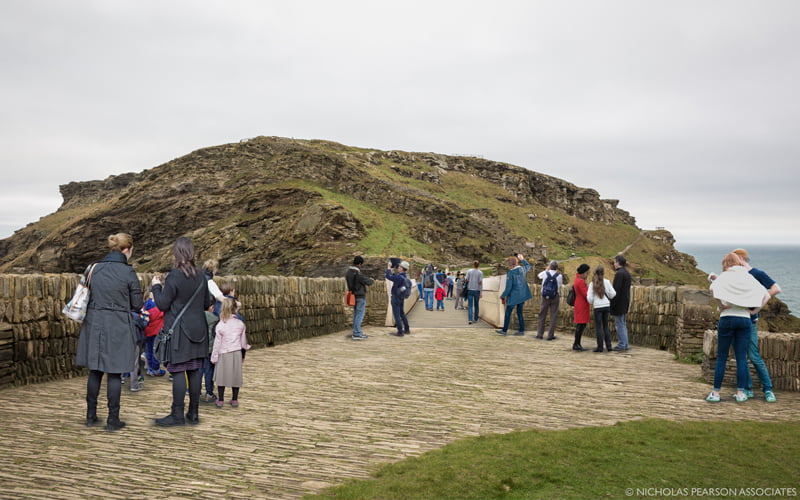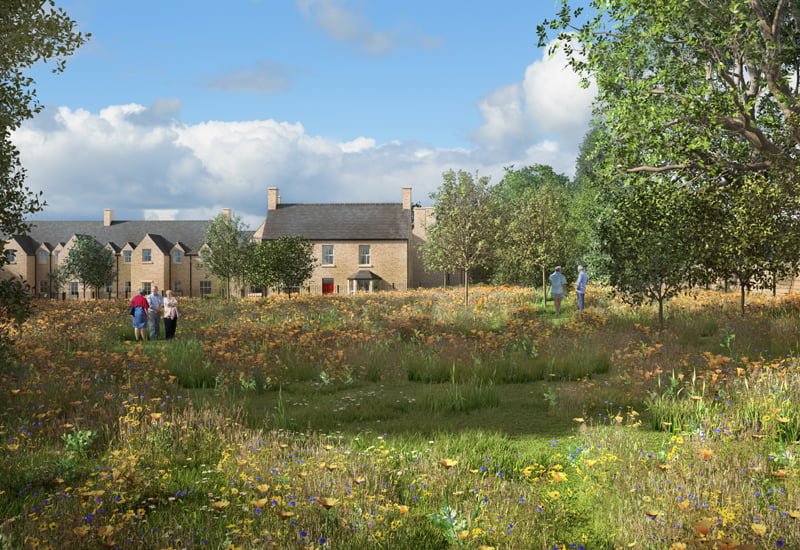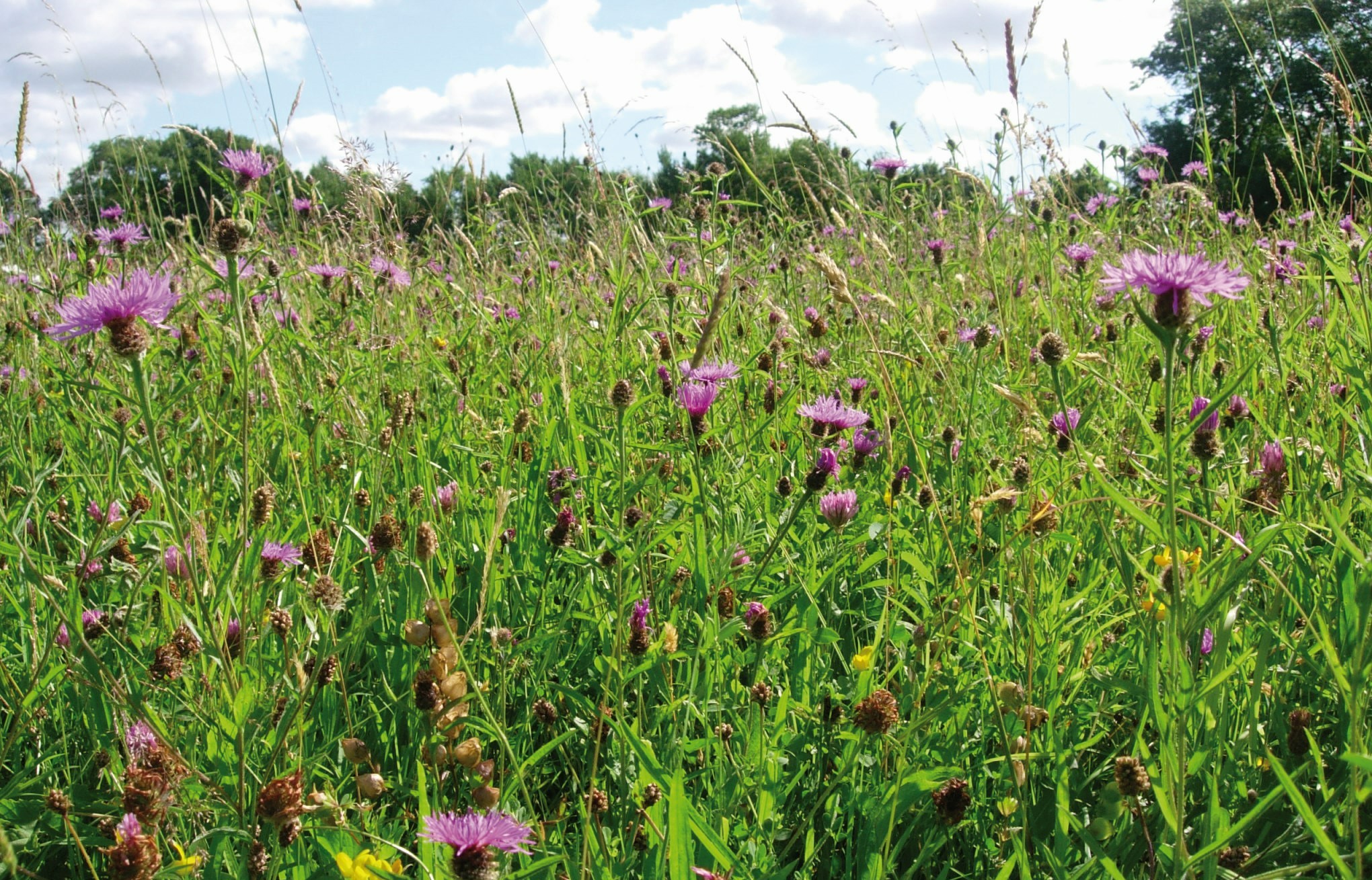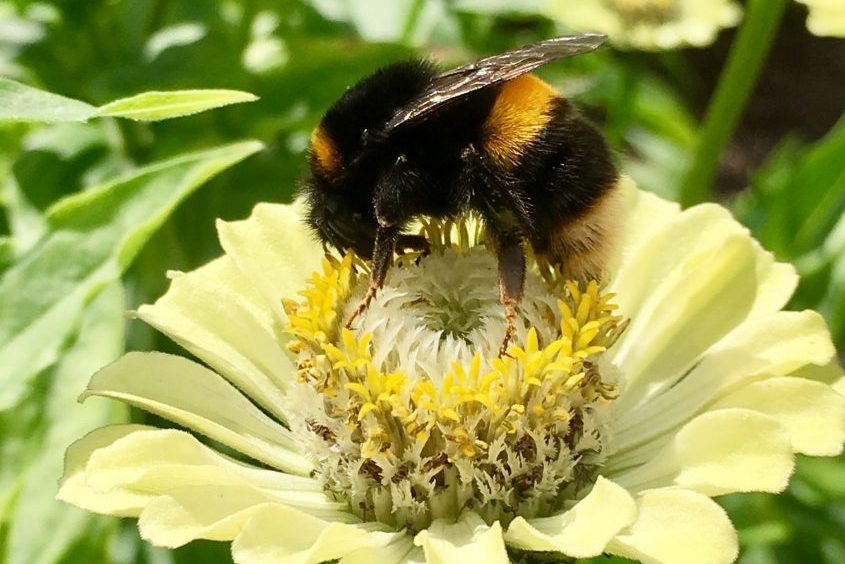A walk in the woods, watching wildlife from the window, or sitting in a sunny courtyard chatting to colleagues – in an increasingly busy and urbanised world, creating these moments where we can pause and connect with nature and each other, are vital for our health and wellbeing. In this article, Rosie James considers how high quality landscape design can help bring us closer to nature, and create healthy places and spaces.
The Natural Health Service
Natural environments, whether experienced physically, virtually, or seen through a window, have a positive effect on our health and wellbeing. A growing body of evidence supports this, including a recent study which found that people who visit natural spaces weekly, and feel emotionally connected to them, reported better physical and mental wellbeing (Martin et al., 2020).
Research has specifically evidenced associations between experiences of nature and increased psychological wellbeing. Nature experience is linked to:
- happiness;
- positive social interactions, cohesion and engagement;
- a sense of meaning and purpose in life;
- improved manageability of life tasks;
- memory and attention; and
- improved sleep and a reduction in stress (Bratman et al., 2019).
The value of natural spaces for mental health is, therefore, an important factor to consider in the planning and landscape design of our places and spaces. It sits alongside the other benefits, or ecosystem services that greenspaces provide.
A study was carried out to calculate the natural capital value of the urban and non-urban natural environments in Greater Manchester (eftec, 2019). Of the nine natural capital benefits measured (air quality, recreation, physical health, mental health, noise, local climate, carbon, food and minerals), it was found that about half of the overall asset value was due to human health and wellbeing benefits. Mental health benefits were measured through avoided healthcare costs, and valued at £264 million per year.
Ways to wellbeing
The New Economics Foundation (2010) suggest there are five steps that can be taken to improve personal wellbeing:
- Connect: “Connect with the people around. With family, friends, colleagues and neighbours. At home, work, school or in your local community.”
- Be active: “Go for a walk or run. Step outside. Cycle. Play a game. Garden. Dance”
- Take notice: “Be curious. Catch sight of the beautiful. Remark on the unusual. Notice the changing seasons.”
- Keep learning: “Try something new. Rediscover an old interest… Fix a bike. Learn to play an instrument or how to cook your favourite food.”
- Give: “Volunteer your time. Join a community group. Look out, as well as in. Seeing yourself, and your happiness, linked to the wider community can be incredibly rewarding and creates connections with the people around you.”
When designing places and spaces, we can use this knowledge to create healthier environments.
Our landscape and environmental design work provides and maintains high quality and attractive places and spaces which offer positive health and wellbeing benefits to those who use them in a variety of ways.
Creating healthy places and spaces
1. Connect
The landscape framework of a scheme can provide pockets of communal spaces for local people. With some thoughtful design, these provide spaces for communities to connect. One of the principles of healthy places set out within the Landscape Institute Position Statement (2013) ‘Public Health and Landscape: Creating healthy places’ is that:
“Healthy places make people feel comfortable and at ease, increasing social interaction and reducing antisocial behaviour, isolation and stress”.
With appropriate planting design, to discourage anti-social behaviour, and consideration of accessibility of areas, particularly for older people, going outside is made more attractive and achievable. This can help to combat feelings of isolation and loneliness.
At Royal Fort Gardens, Bristol we created a landscape plaza within the University of Bristol. This created a new area of public open space. The gardens provide a space for students, staff and the public to meet, sit, socialise and relax.

2. Be active
Making active travel options easy and attractive can encourage more people to walk and cycle, and increase daily activity levels.
At Priory Vale in Swindon we created a network of public open spaces which integrated cycle and footpaths to connect the new neighbourhoods, to schools, local centres and sports fields.
Working with English Heritage at Tintagel Castle in Cornwall, we have enabled the creation of over 1.5km of new footpaths through the dramatic and sensitive coastal headland. The new bridge and step-free paths have facilitated access for many people who could not previously access the rocky cliff-top site.

3. Take notice
Maggie Jencks, writer, gardener and designer, founded the Maggie’s Centres for cancer care based on her own experiences of cancer. In contrast to the windowless hospital corridor where she was left to process news of her diagnosis, Maggie wrote in her manifesto ‘A view from the front line’ (Jencks, 1995) of ambitions for a new type of cancer care:
“waiting in itself is not so bad – it’s the circumstances in which you have to wait that count. Overhead (sometimes even neon) lighting, interior spaces with no views out and miserable seating against the walls all contribute to extreme mental and physical enervation. Patients who arrive relatively hopeful soon start to wilt.
Waiting time could be used positively. Sitting in a pleasant, but by no means expensive room, with thoughtful lighting, a view out to trees, birds and sky, and chairs and sofas arranged in various groupings could be an opportunity for patients to relax and talk, away from home cares.”
We work with health authorities to assist them in planning and designing their estates to maximise opportunities for integrating natural environments. This includes making the most of natural assets, and creating new landscapes, designed to provide attractive spaces and places for patients, staff and visitors to enjoy.
In our work for the Royal United Hospitals (RUH) in Bath we prepared a Green Infrastructure Strategy within which the benefits of health and wellbeing are an intrinsic element.
Our involvement in the proposed new Dyson Cancer Centre at the RUH included developing a landscape design with integral health and wellbeing benefits. The proposals include a major new garden space: a “Green Heart” for the hospital.
Key elements in our landscape design include:
- cherishing existing trees;
- creating opportunities for healing gardens;
- providing accessible routes and access to the gardens; and
- designing views into the gardens from inside the Centre.
A planting palette has been developed to change with the seasons from spring blossom, through scented flowers of summer, autumn colour to winter structure.
4. Keep learning
We have particular experience in the Education sector. We understand the vital role outdoor spaces provide in supporting learning activities – from school grounds, to university campuses, through to more informal spaces such as natural play areas.
A study of students participating in the outdoor learning programme ‘Forest School’, compared normal school days to those spend at the Forest School (Lovell and Roe, 2009). It was found that the Forest School was “advantageous to mood in all behaviour groups”; however, particularly in adolescents with mental health conditions.
At Hayesfield School, Bath the external design was carefully considered to integrate the building with the landscape. A series of linked spaces around the building provide places to sit and areas of biodiverse planting.

5. Give
Community gardens can provide spaces in which to ‘connect’, ‘be active’, ‘take notice’ and ‘keep learning’ all within a natural setting. However, they also provide volunteering opportunities and a chance to ‘give’ – the final step towards wellbeing.
We provided design advice to the Arnos Vale Cemetery Trust to support a successful planning application for a new community garden, in which visitors can meet, learn and grow produce.

Summary
As landscape designers we are often thinking about the relationship between people and nature, identifying ways to trigger an emotional responses in our landscape schemes – a view, a scent, birdsong, apples from a community orchard, a bench for a spot of sunbathing. As outlined above, there are a number of elements that combine to promote wellbeing. Through designing with these in mind, we can seek to enhance the health of our places and spaces.
References:
Bratman et al., (2019) Nature and Mental Health: An Ecosystem Service Perspective
eftec (2018) Natural Capital Account for Greater Manchester
Jencks, M. K. (1995) A View from the Front Line
Landscape Institute (2013) Public Health and Landscape: Creating Healthy Places
Lovell and Roe (2009) Physical and Mental Health Benefits of Participation in Forest School
Martin, L., White, M. P., Hunt, A., Richardson, M., Pahl, S. & Burt, J. (2020) Nature contact, nature connectedness and associations with health, wellbeing and pro-environmental behaviours. Journal of Environmental Psychology. Volume 68, April 2020.
New Economics Foundation (2010) Five Ways to Wellbeing







